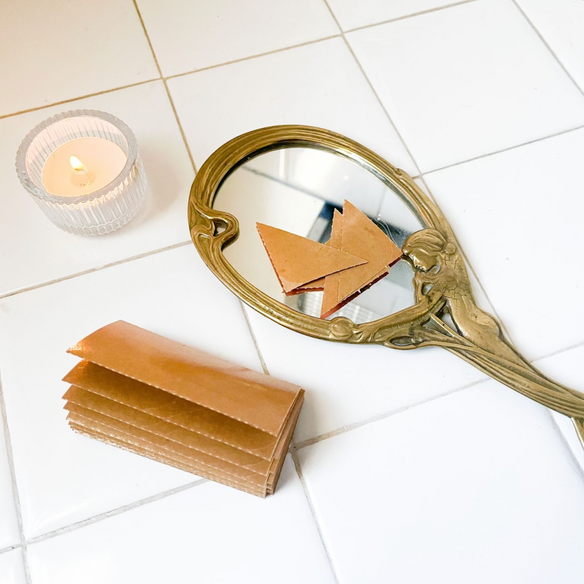
Botnia’s Holistic Esthetician Breaks Down Dry vs. Dehydrated Skin
Feeling like a flaky croissant rather than a glazed donut these days? Flakiness, itchy irritated cracked skin, wrinkles, and fine lines - these are just some of the symptoms you might be feeling if you have dry or dehydrated skin. During the colder months of the year, even the oiliest skin can still feel dry or dehydrated. Let’s break down the difference between dry skin and dehydrated skin and learn how to treat them both!
Dry vs. Dehydrated skin
Here’s the gist of it: Dry skin lacks oil, whereas dehydrated skin lacks water. But dry skin can be an indication that you have dehydrated skin. Take a potted plant for example; after a day or two of watering, the top of the soil can dry out, but if you stick your finger inside the soil, it will still be moist. The top of the soil represents your skin and it feeling dry, but it’s hydrated underneath.
For a plant that’s dehydrated, you’ll notice the plant itself begin to shrivel up, and if you check the soil, the whole pot is most likely bone dry needing water immediately - definitely dehydrated. Make sense?
Let’s look at the difference between the two in terms of skin.
Dry skin usually happens when the skin lacks oil. Mild traits that can signal dry skin start with redness and irritation. Followed by itchiness and rough patches on the skin. More severe traits can include cracked flaky skin, scaling, and loose skin.
Cold climates, dry environments (like using the heater inside during the winter), and taking hot showers or baths are some of the external reasons why our skin can dry out. Using harsh soaps, abrasive products, and skipping on using a moisturizer can add to the recipe for developing dry skin. It can also be caused by age, hormonal imbalances in the body, and genetics. The goal with dry skin is to keep the moisture in the skin and protect it from the elements.
Dehydrated skin happens when the body lacks water. When you have more water and fluid leaving the body than enters it, your body has to reserve the water it has and separates it among the organs that need water the most to function. When the body is dehydrated, the skin is deprioritized and can still do its job without water but you’ll notice a few things. Dehydrated skin traits include dull skin that lacks glow, poor elasticity, and dry mucus membranes (like the insides of your nose). You may also notice fine lines, sunken eyes, and cracked and dry lips or mouth. Oily skin can still be dehydrated.
Skin becomes dehydrated from drinking less water than your body needs, sweating, sunburns or heatstroke, some health conditions (like diabetes), and taking certain medications (antihistamines, laxatives, diuretics, antacids, blood pressure medication). The goal with dehydrated skin is to bring more moisture to it. Treating dehydrated skin topically may not fully moisturize the skin if your body is missing the water it needs, so be sure to hydrate by drinking water as well!
Treating dry and dehydrated skin with Botnia
Dry skin goals include keeping moisture in the skin and protecting it using occlusive or emollient moisturizers. Occlusive moisturizers have oils and waxes that help to form a layer over the skin’s surface to physically block water from evaporating from the skin. Emollients are made of long-chain fatty acids and help to prevent dry rough skin.
Our Master Esthetician, Amanda of Coastal Glow Skincare, loves recommending Essential Enzymes as a mask to help slough off any dead or flaky skin. Follow up with a hydrating hydrosol and seal all the goodness in with the Daily Face Cream and an oil.
Dehydrated skin goals include bringing moisture to the skin using humectant moisturizers and products. Humectants bond with water molecules and hold them in the skin’s surface. This is your hyaluronic acid or glycerin and you’ll want to look for these types of ingredients if you’re feeling tight and dehydrated.
For dehydrated skin, Amanda recommends cleansing with the Gentle Cleanser and adding in a pump of the Soothing Repair Mask to add moisture. Spritz with Rose Water Toner and then use the Hydrating Serum to soak it all up. Lastly, follow up with Restorative Face Cream and Wisdom Oil if recommended by your esthetician!
Pro tip: Layer on those hydrosols! Unless you have a hydrosol nearby, in dry environments, you actually want to avoid humectants as they can draw water from your body, causing your skin to be depleted of moisture. Adding a humidifier in the room with the heater is a great idea as well.
Learn more about the differences between occlusives, emollients, and humectants here.
Avoid the following
For dry skin, you’ll want to take lukewarm showers instead of steaming hot ones, and use natural soaps and a moisturizer after you get out of the shower. Keep a humidifier on when using heaters and try slugging in your evening skincare routine to keep your skin hydrated through the night.
For dehydrated skin, don’t forget to drink as much water as possible throughout the day. Reduce caffeine, sugar, and alcohol in your diet to avoid more dehydration. Spray a hydrosol throughout the day to bring moisture to your skin. Eat moisture-rich foods and get plenty of rest.
If you’d like a personalized skincare routine for dry and/or dehydrated skin, check in with your local esthetician or reach out to us (botniaskincare@gmail.com)! We recommend seeking guidance from a doctor or your health practitioner if the symptoms begin to interfere with your daily life.
Xo,
Botnia














